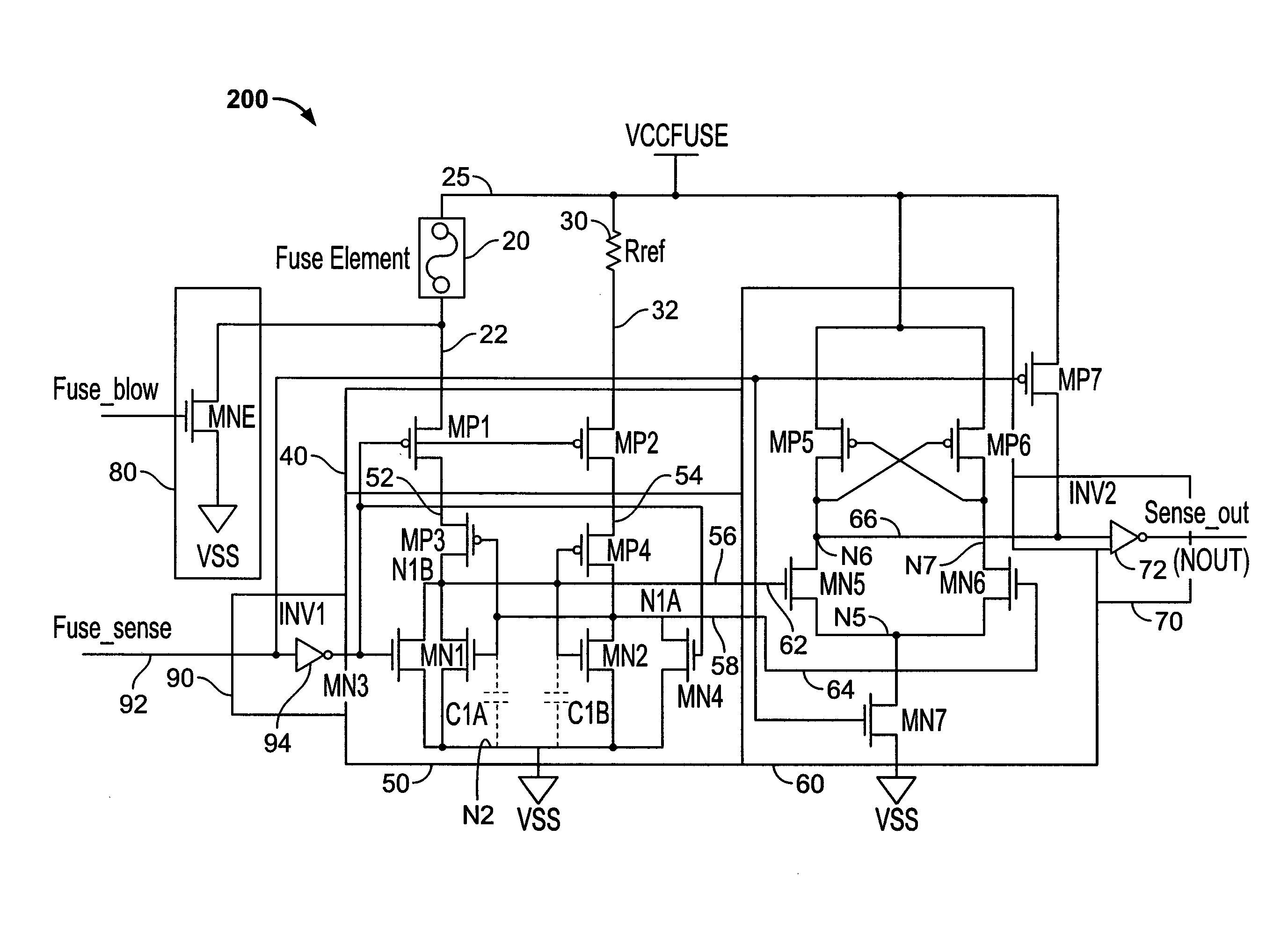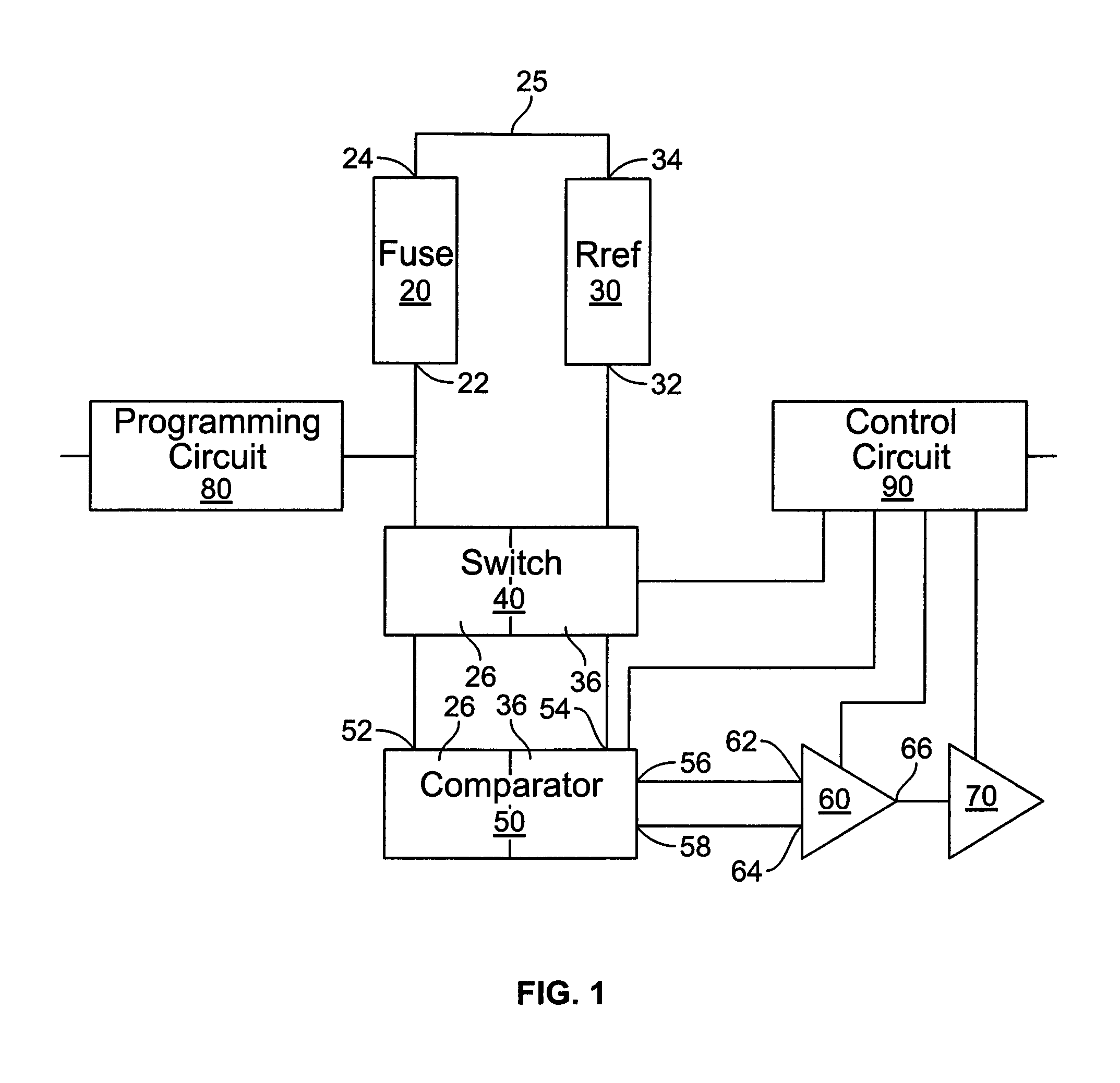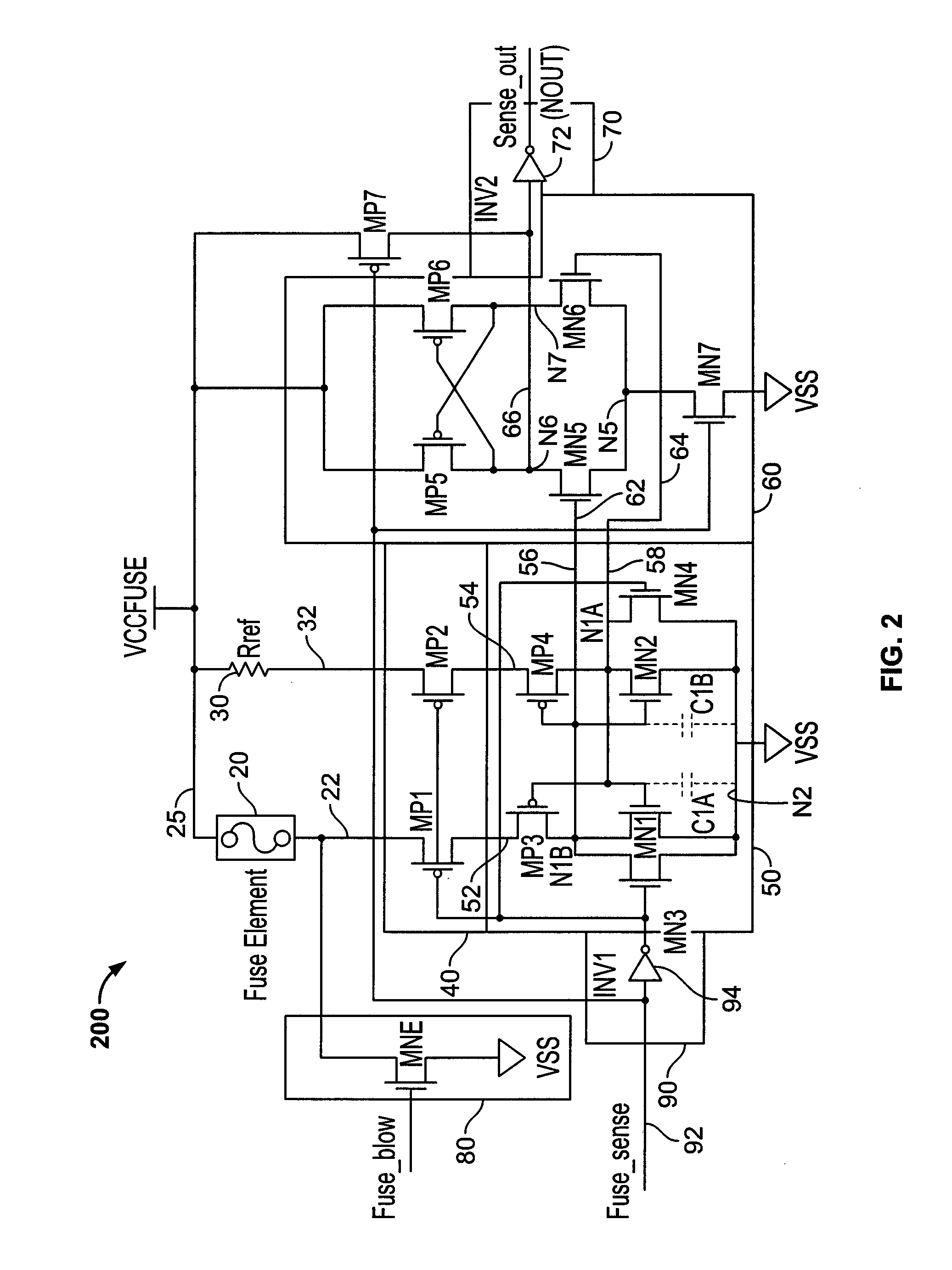Sensing circuit
a technology of sensing circuit and circuit board, which is applied in the direction of fuses testing, instruments, alarms, etc., can solve the problems of imposing a significant current drain, and the use of electrically programmable fuses in modern integrated circuits
- Summary
- Abstract
- Description
- Claims
- Application Information
AI Technical Summary
Benefits of technology
Problems solved by technology
Method used
Image
Examples
Embodiment Construction
[0012]FIG. 1 is block diagram of an illustrative sensing circuit 10 of the present invention. Circuit 10 comprises a fuse 20, a reference resistance 30, a switch 40, a comparator 50, an amplifier 60, and an output buffer 70. Circuit 10 further comprises a programming circuit 80 for programming fuse 20 and a control circuit 90 for controlling switch 40, comparator 50, amplifier 60 and output buffer 70. In the case where fuse 20 is a polysilicon (or poly) fuse or a copper fuse, the resistance of the fuse in its unprogrammed state is typically in the range of 100 to 200 Ohms. In its programmed state, the minimum resistance of the fuse is typically in the range of 2,000 to 10,000 Ohms. For these resistance values for fuse 20, a typical resistance value for resistance 30 is approximately 900 Ohms.
[0013]Comparator 50 has first and second inputs 52, 54 and first and second outputs 56, 58; and amplifier 60 has first and second inputs 62, 64 and at least a first output 66. The first and seco...
PUM
 Login to View More
Login to View More Abstract
Description
Claims
Application Information
 Login to View More
Login to View More - R&D
- Intellectual Property
- Life Sciences
- Materials
- Tech Scout
- Unparalleled Data Quality
- Higher Quality Content
- 60% Fewer Hallucinations
Browse by: Latest US Patents, China's latest patents, Technical Efficacy Thesaurus, Application Domain, Technology Topic, Popular Technical Reports.
© 2025 PatSnap. All rights reserved.Legal|Privacy policy|Modern Slavery Act Transparency Statement|Sitemap|About US| Contact US: help@patsnap.com



